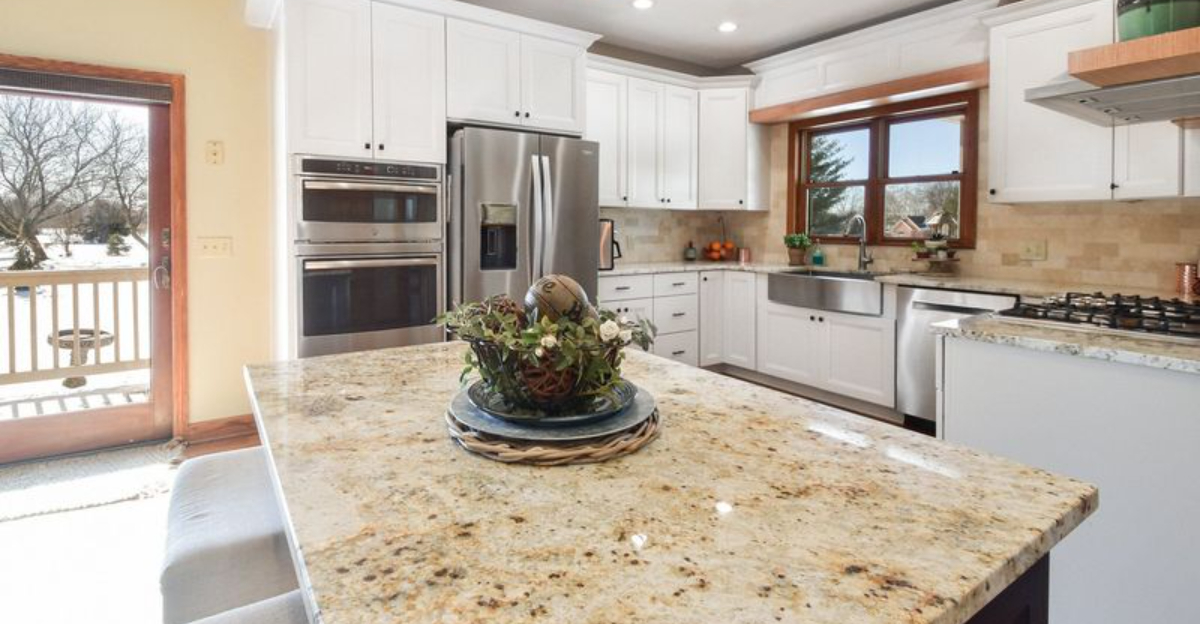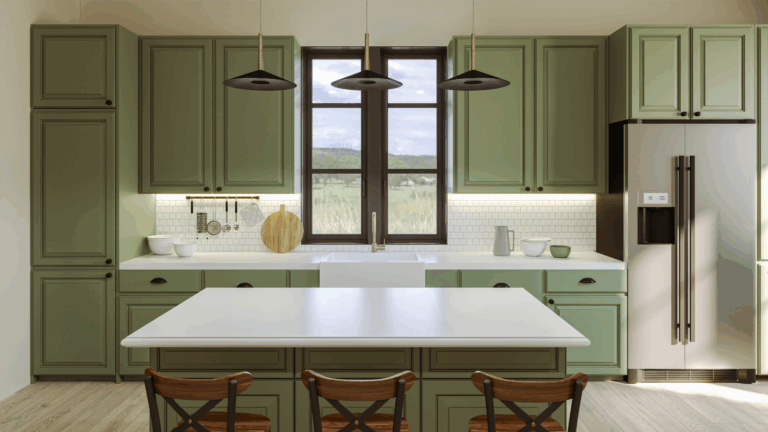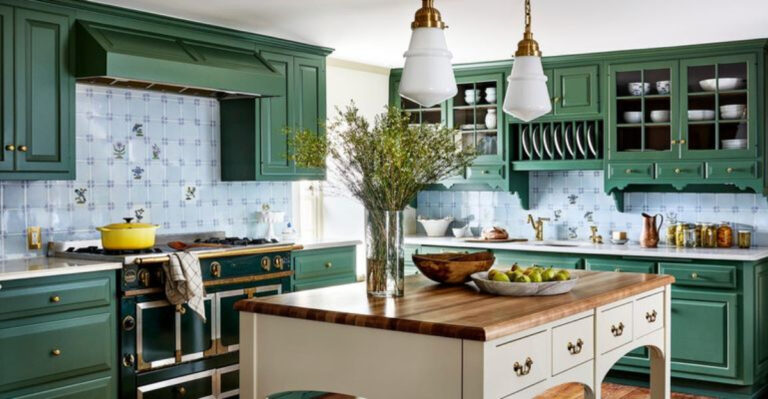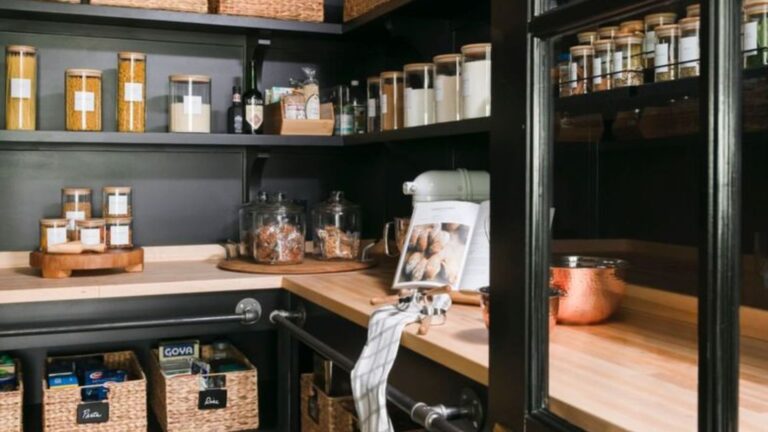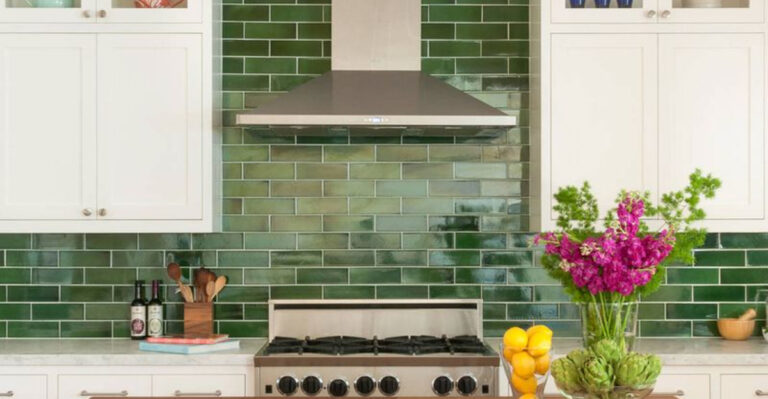What Type Of Stone Should You Use For Kitchen Countertops?
Picking the perfect stone for your kitchen countertops can feel a little overwhelming, I’ve been there. You want something beautiful, sure, but it also needs to survive spills, hot pans, and the occasional slip of the knife.
And of course, it has to fit your budget. With so many options out there, it’s hard to know where to start. That’s why I’ve rounded up 15 stone countertop choices that check all the right boxes.
Whether you’re after timeless elegance or low-maintenance practicality, there’s something here to match your kitchen dreams and your real-life cooking habits.
1. Granite
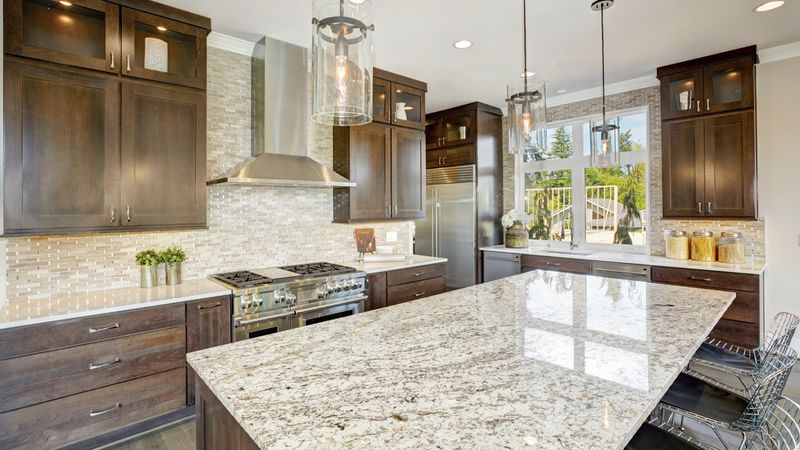
Granite remains a top pick for homeowners who crave durability with natural beauty. Each slab tells a unique story with its one-of-a-kind mineral patterns and color variations.
If properly sealed, granite laughs in the face of heat, scratches, and stains. The maintenance isn’t too demanding either – just reseal annually and wipe up spills promptly.
Budget-conscious folks will appreciate that granite now comes in various price points, making this premium stone more accessible than ever before.
2. Marble

Marble transforms ordinary kitchens into magazine-worthy spaces with its distinctive veining and luminous surface. Bakers particularly love how the cool surface keeps dough from sticking during pastry work.
Though undeniably beautiful, marble demands commitment. You’ll need to seal it regularly and quickly clean acidic spills like lemon juice or wine to prevent etching.
Sometimes the patina that develops over time becomes part of marble’s charm – a living history of your kitchen adventures.
3. Quartzite
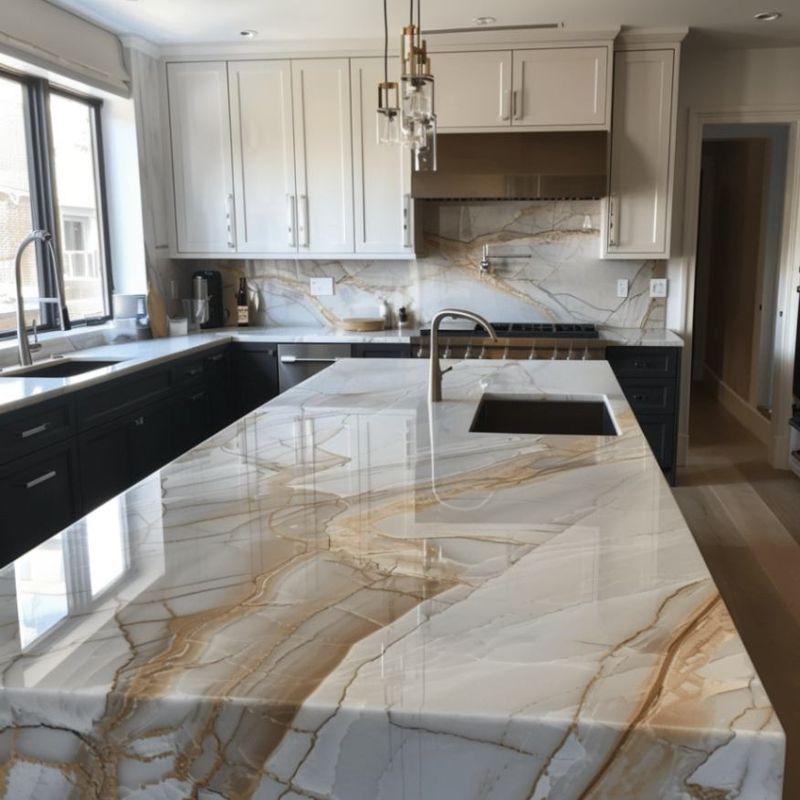
Quartzite offers the best of both worlds – marble-like appearance with granite-level durability. Mother Nature formed this stunner under intense heat and pressure, creating a material that withstands your busiest cooking days.
Unlike its lookalike marble, quartzite resists scratches, heat, and etching like a champ. The price tag sits higher than some options, but many homeowners find the performance worth every penny.
White macaubas and sea pearl varieties showcase particularly striking patterns that make your countertops conversation pieces.
4. Engineered Quartz
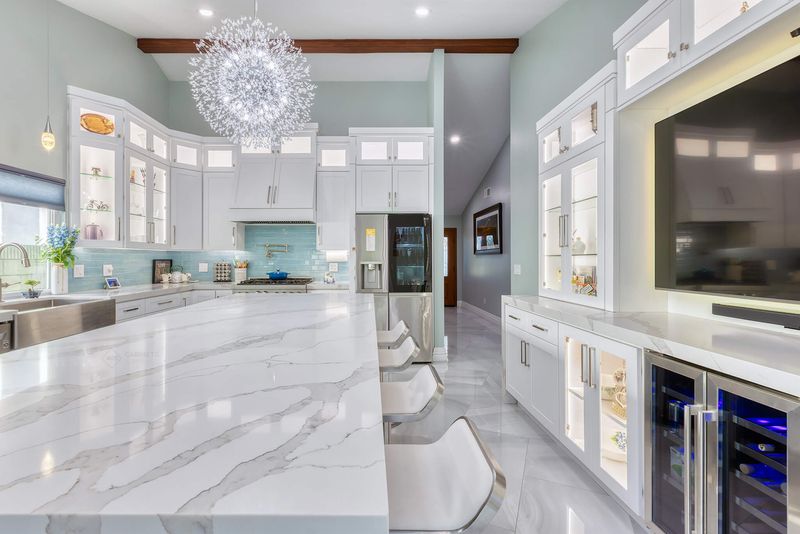
Engineered quartz brings consistency to the countertop game with its manufactured perfection. Made from roughly 90% ground quartz and 10% resins, it gives you predictable patterns without natural stone’s variability.
Parents and busy cooks celebrate quartz for being virtually maintenance-free. No sealing required, and its non-porous surface prevents bacteria from setting up camp in your kitchen.
While not completely heat-proof, quartz handles most kitchen activities beautifully and comes in countless colors and patterns to match any design vision.
5. Soapstone

Soapstone countertops bring old-world appeal with their soft, matte finish that darkens beautifully over time. The material feels slightly warm and soft to touch, unlike other stone options.
Though softer than granite, soapstone stands up remarkably well to heat – you can place hot pots directly on it without worry. Minor scratches can be buffed out with mineral oil, which also enhances its rich, dark color.
Many old laboratories used soapstone for its chemical resistance, making it perfect for cooking enthusiasts who experiment with acidic ingredients.
6. Limestone
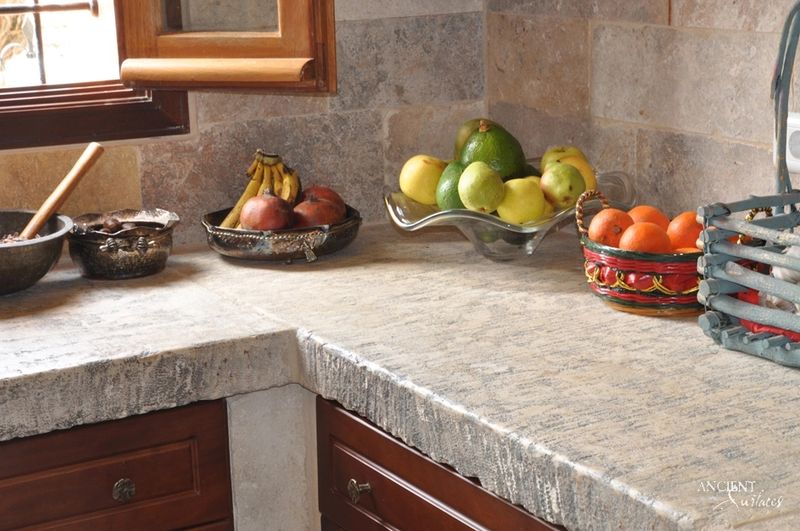
Limestone brings the warm, earthy tones of the Mediterranean into your kitchen. Its soft, matte appearance creates a lived-in, comfortable vibe that contrasts with shinier stone options.
While beautiful, limestone requires commitment to maintenance. You’ll need to seal it regularly and wipe spills quickly to prevent staining and etching from acidic foods.
For those seeking authenticity, limestone’s fossil markings and natural imperfections tell a story millions of years in the making – each countertop holds actual pieces of ancient history.
7. Travertine

Travertine instantly transports your kitchen to an Italian villa with its warm honey and cream tones. The natural holes and troughs in this limestone variety create distinctive character you won’t find in manufactured options.
For a lived-in look, leave the holes unfilled. If you prefer smoother surfaces, filled travertine provides practicality while maintaining the stone’s rustic charm.
Though requiring similar care to limestone, travertine rewards you with a countertop that grows more beautiful with age, developing a patina that enhances its old-world appeal.
8. Slate
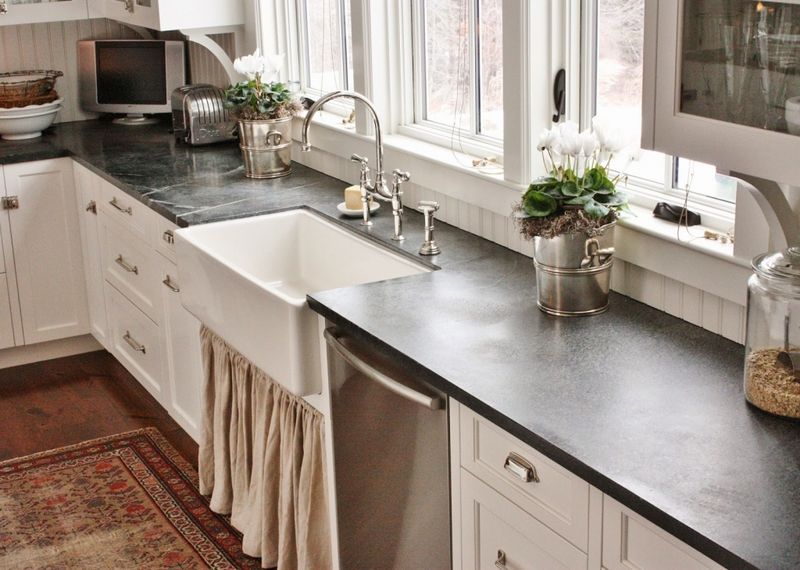
Slate countertops offer understated elegance with their consistent, mostly solid coloring in grays, blacks, and deep greens. Their non-porous nature means bacteria and spills stay on the surface – a big win for kitchen cleanliness.
Unlike many natural stones, slate rarely needs sealing and stands up admirably to heat. The matte finish also hides fingerprints and water spots better than polished surfaces.
Though occasionally prone to chipping at the edges, slate’s overall durability and subtle beauty make it perfect for homeowners who want performance without flashiness.
9. Onyx
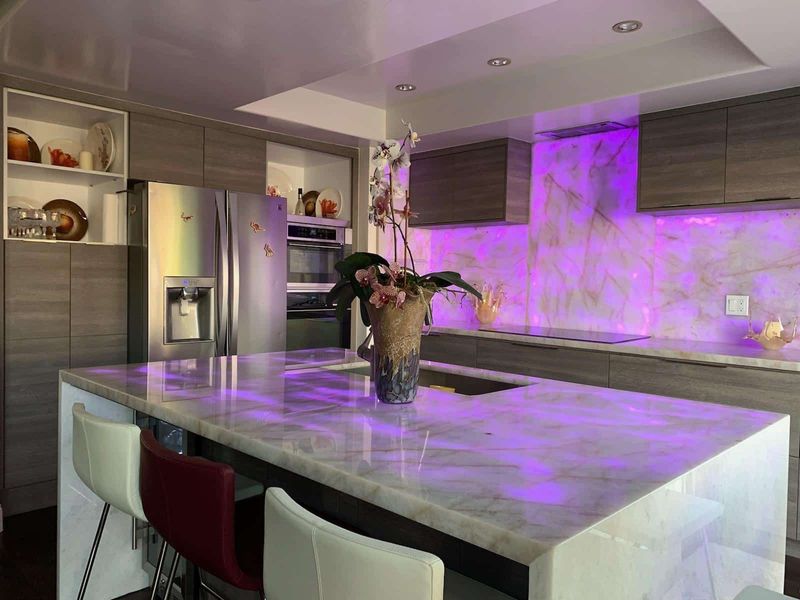
Onyx countertops create jaw-dropping drama with their translucent quality and bold, swirling patterns. When backlit, they transform from mere countertops into functional art pieces that glow with ethereal beauty.
Few stones demand more careful treatment than delicate onyx. Reserved for low-traffic areas or homes without young children, this soft stone shows scratches and etches easily.
Those willing to embrace the high maintenance are rewarded with truly unique surfaces – no two onyx slabs look alike, ensuring your kitchen stands out from every other on the block.
10. Basalt
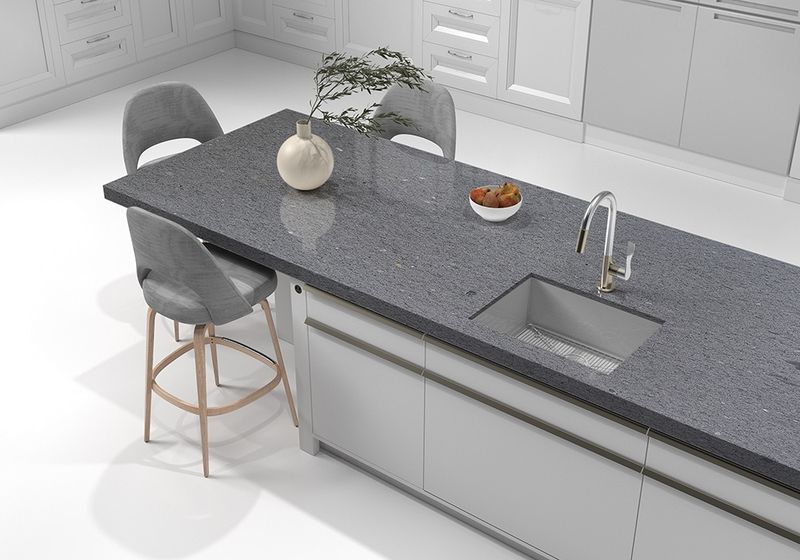
Basalt brings volcanic origins to your kitchen with its deep charcoal to black coloring and minimal pattern variation. Its understated appearance works beautifully in modern, minimalist kitchens where clean lines rule.
Though less well-known than other options, basalt offers excellent durability and heat resistance. The dense volcanic stone resists staining and scratching when properly sealed.
Many environmentally conscious homeowners appreciate basalt’s abundance and sustainability compared to rarer stone types that require more intensive quarrying.
11. Sandstone
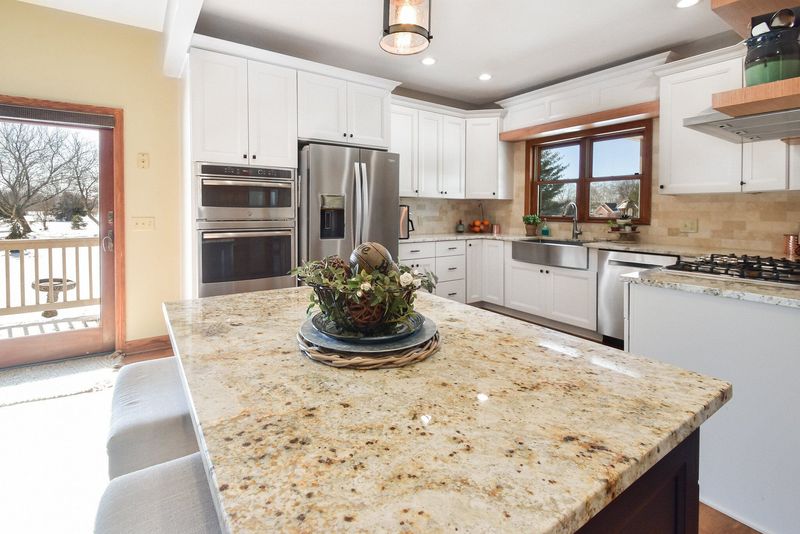
Sandstone brings the warmth of desert landscapes into your kitchen with its earthy tans, rusty reds, and golden hues. The subtle graininess adds textural interest that smooth stones can’t match.
While softer than many options, properly sealed sandstone can still perform well in kitchens. You’ll need to embrace some patina development over time as part of its natural aging process.
For Southwestern or desert-inspired kitchens, nothing beats sandstone’s ability to complement terracotta tiles and natural wood elements with authentic, earth-derived beauty.
12. Bluestone

Bluestone introduces subtle sophistication with its blue-gray tones that range from nearly charcoal to lighter slate blue. Its consistent coloring creates a calm, cool foundation for busy kitchen spaces.
Though primarily used outdoors, properly sealed bluestone makes a distinctive indoor countertop choice. The thermal properties help it stay cool to the touch – perfect for pastry work.
Many homeowners appreciate bluestone’s ability to bridge traditional and contemporary designs, working equally well with white cabinets or industrial metal elements.
13. Lava Stone

Lava stone countertops start with volcanic rock that’s glazed with vibrant enamel in virtually any color imaginable. This unusual option combines natural origins with customizable finishes for truly personal expression.
Unlike most stone options, the glazed surface creates a non-porous, extremely durable countertop that resists everything from heat to acids. Even knife cuts barely leave a mark on this tough customer.
French kitchens have used lava stone for generations, appreciating how the glaze develops a subtle crackle pattern over time that adds character without compromising performance.
14. Terrazzo
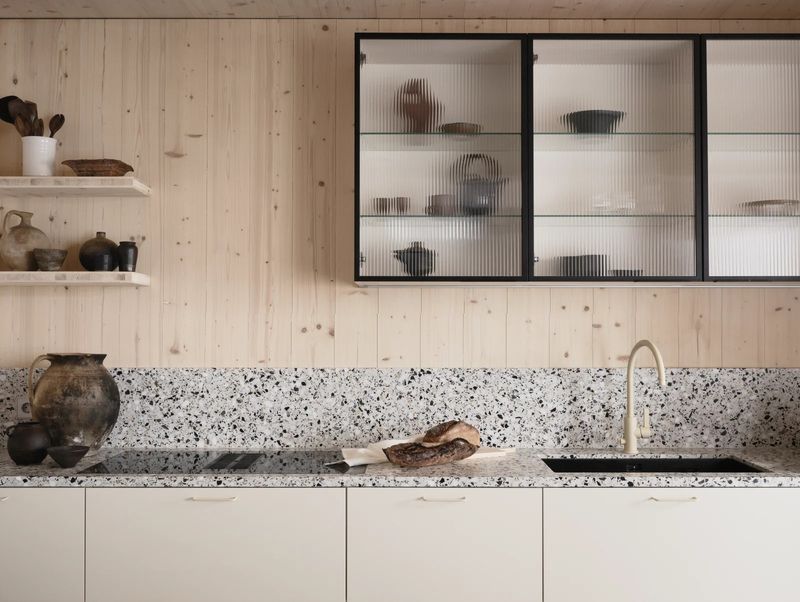
Terrazzo blends stone chips like marble, quartz, or granite in a cement or resin base for a playful, confetti-like appearance. Though not a solid stone, it incorporates stone elements for unique visual texture.
Once limited to commercial spaces, terrazzo now appears in high-style homes where its customizable chip colors and sizes create one-of-a-kind countertops.
The smooth, seamless surface makes cleaning a breeze. History buffs appreciate that terrazzo dates back to ancient Egypt and reached its height of popularity in mid-century modern designs – making it both timeless and trendy.
15. Concrete With Stone Aggregate
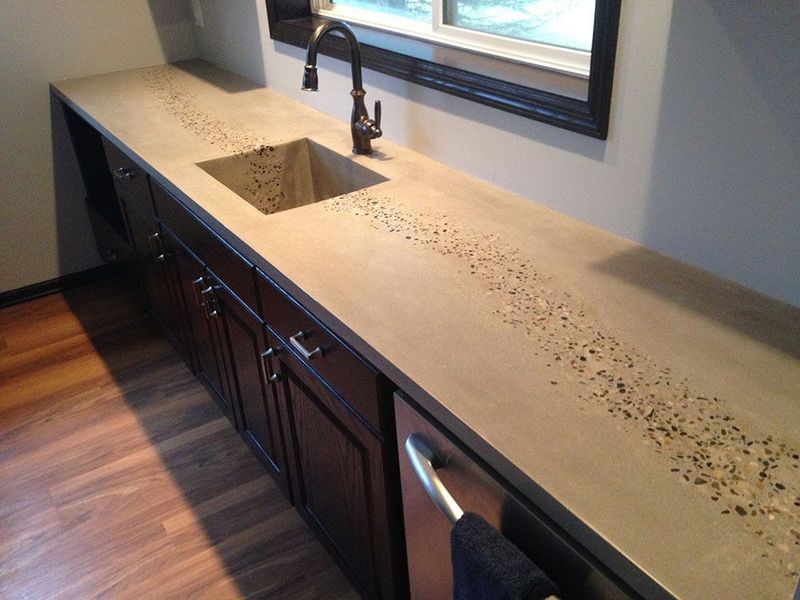
Concrete countertops with stone aggregate offer industrial charm with customizable stone inclusions. Crushed granite, marble, or glass pieces add sparkle and texture to the concrete base.
Unlike pure concrete, the stone additions create visual interest that elevates the material beyond its utilitarian origins. Each countertop can be custom-colored and polished to your exact specifications.
Many homeowners love how these countertops develop character over time, with subtle stains and wear becoming part of their lived-in appeal – perfect for those who find perfection in imperfection.

